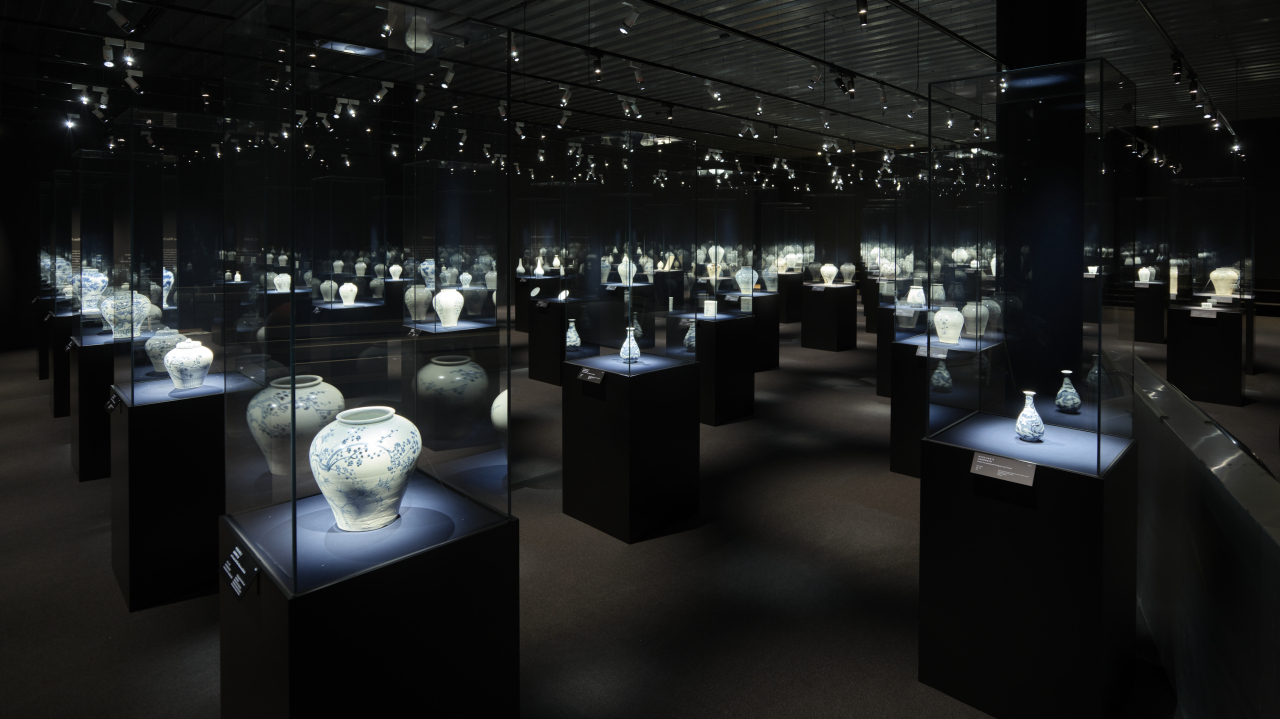Essential collection of Joseon-era white porcelains unfolds at Leeum Museum of Art
By Park YunaPublished : March 17, 2023 - 16:29

Leeum Museum of Art has staged white porcelains from the Joseon era (1392-1910) at its special exhibition, “Joseon White Procelain, Paragon of Virtue,” bringing together high-quality works of white porcelains, which are known as the symbolic craftwork of the era.
White porcelain began to be made under the supervision of the royal court in the late 15th century, with the official kilns established in Gwangju, Gyeonggi Province. Diverse types of white porcelain had been produced for 500 years during the Joseon era, many of which have survived today at home and abroad.
Leeum Museum of Art, run by the Samsung Foundation of Culture, has brought together some 185 white porcelain pieces for the first time to shed light on the craftwork, including 59 state-designated works.

Visitors begin the tour in a dark room, the highlight of the exhibition, where curator Lee Jun-kwang presents the finest works among the different types of white porcelain -- blue-and-white porcelain, white porcelain in iron-brown underglaze, white porcelain in copper-red underglaze and monochrome white porcelain.
“This place (Pinnacle of Joseon White Porcelain) sums up what you will see throughout the exhibition downstairs where the show continues,” Lee told The Korea Herald during a media tour around the exhibition hall.
“This one, ‘Jar Decorated with Plum Blossoms and Bamboo’ from the 15th century,’ was designated as the national treasure and is the quintessential example of blue-and-white porcelain from the early Joseon era with a magnificent shape and painted design of plum blossoms and bamboo with cobalt-blue pigment,” he said in the dark hall where the pieces on display stand illuminated by a narrow beam of light.

While the cobalt-blue pigment was most preferred, iron oxide pigment was also used to embody strong expressions on white porcelain. “Jar Decorated with Grapes" is an example of a white porcelain under iron-brown underglaze that flourished from the 17th to early 18th century, according to the museum.
Walking further down the hall, visitors will come across a moon jar, which is most popularly known today as the typical type of jar from the Joseon era. The moon jar on display, applied with a transparent glaze from the 18th century, was made in the official kilns for the royal court and is a designated national treasure.
“It is generally known that a moon jar is supposed to have a distorted shape, but it was considered more high-quality work if they have a balanced shape and the joint part where the two halves are connected is merely seen,” the curator said.
Resembling the moon, the large spherical jar's upper and lower parts are produced separately as the jar is too large to be formed on a potter’s wheel at once.

The exhibition expands downstairs with the sections “Blue-and-white Porcelain,” “White Porcelain in Iron-brown Underglaze and Copper-red Underglaze” and “Monochrome White Porcelain.”
The selection of white porcelains for the show was chosen from collections of prominent museums, including Leeum Museum of Art, Amorepacific Museum of Art and Museum of Oriental Ceramics, Osaka, as well as private collectors, under a thorough and strict appraisal, according to the museum.
The exhibition runs through May 28 and online reservations are required.




















![[Today’s K-pop] BTS pop-up event to come to Seoul](http://res.heraldm.com/phpwas/restmb_idxmake.php?idx=642&simg=/content/image/2024/04/17/20240417050734_0.jpg&u=)